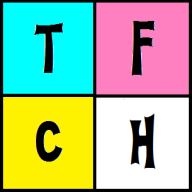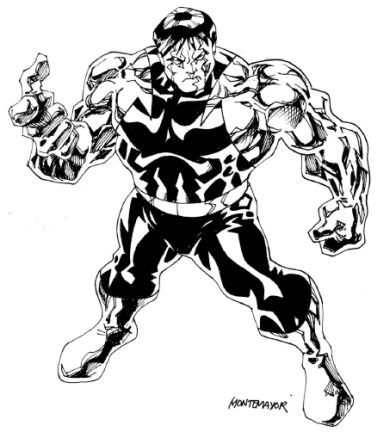Hero Advancement! Huzzah!
About a week ago, I hit a wall writing The Four Color Hack. For several days, it seemed as if the rules were pretty much writing themselves, but them I hit the section on character advancement. Since TFCH doesn’t have classes, and since superheroes changing powers or gaining new powers and so forth is so much a part of the genre, I knew level advancement would have to be more complex than The Black Hack, but I just couldn’t nail down how to rough-draft the rules. That is, until I had a flash of insight, so to speak, while driving to work this morning. What follows is the gist of the system.

When you create your hero, he starts at 1st level. As he saves lives, fights villains, and figures out how to balance hero-ing with his normal life, he grows in experience and knowledge. Your hero needs experience points (XP) equal to 4 plus his current level to gain a level. XP is earned at certain specific points during game play.
End of Session
At the end of each game session, your hero gains 1 XP. He gains additional XP equal to the highest Bonus Hero Die earned during the session: 1d4, 1d6, or 1d8 = 1 XP; 1d10, 1d12, or 1d16 = 2 XP; 1d20 = 3 XP. You may also rename or redefine one of your hero’s idioms to reflect your hero’s experiences during the session. You may also rearrange the Hero Dice within a power container. You may also rename or redefine one of your hero’s idioms to reflect your hero’s experiences during the session. You may also rearrange the Hero Dice within a power container.
End of Issue
At the end of an Issue, your hero gains 2 XP. He gains additional XP equal to the highest Bonus Hero Die earned during the session the Issue ended: 1d4, 1d6, or 1d8 = 1 XP; 1d10, 1d12, or 1d16 = 2 XP; 1d20 = 3 XP. As at the end of session, you may also rename or redefine one of your hero’s idioms to reflect your hero’s experiences during the issue. You may also rearrange the Hero Dice within a power container. Lastly, you gain a Hero Improvement Die, which is explained more immediately below.
Leveling Up
When your hero earns sufficient XP to advance a level, you may perform the following:
See If Ability Scores Increase: Roll 1d20 for each ability score. If the die result is higher than the ability score, increase that score by 1 point. You may roll twice for one ability score, choosing the better of the two results. No ability score may increase to higher than 20. Increases in ability scores change Body and Spirit totals.
Gain a New Skill: You may decide to not roll to increase any two ability scores in order to give your hero a new skill. A skill is a relatively narrow specialization tied to an ability score. When your hero uses a skill, roll with Advantage.
See if Body and Spirit Increase: Aside from any increases to Body and Spirit gained from higher ability scores, your hero’s damage thresholds may rise. Roll 1d8-1 for one and 1d6-1 for the other. It’s your choice as to which die applies to which set of points with each level increase.
Spend Hero Improvement Dice: Your hero has earned a Hero Improvement Die. This die starts as a d4 and upgrades one step each time a new Hero Improvement Die is earned. You use a Hero Improvement Die to add new powers or to improve old powers. Adding new powers works just like spending Hero Dice during character creation. These new powers can be part of an old power container, or they can form a new power container, which must have a limitation as normal. Upgrading an old power to the next highest die requires a die equal to the power’s current value. Bee Girl had Flight d6. In order to gain Flight d8, Bee Girl would have to spend a d6 Hero Improvement Die.
If you want, a Hero Improvement Die can be exchanged for a larger number of lesser dice just like you did when you created your hero. So, if Bee Girl had earned a d8 Hero Improvement Die, she could trade that it for 2d6 and improve both Flight and Bee Senses, add two new powers at 1d6 each, et cetera.

